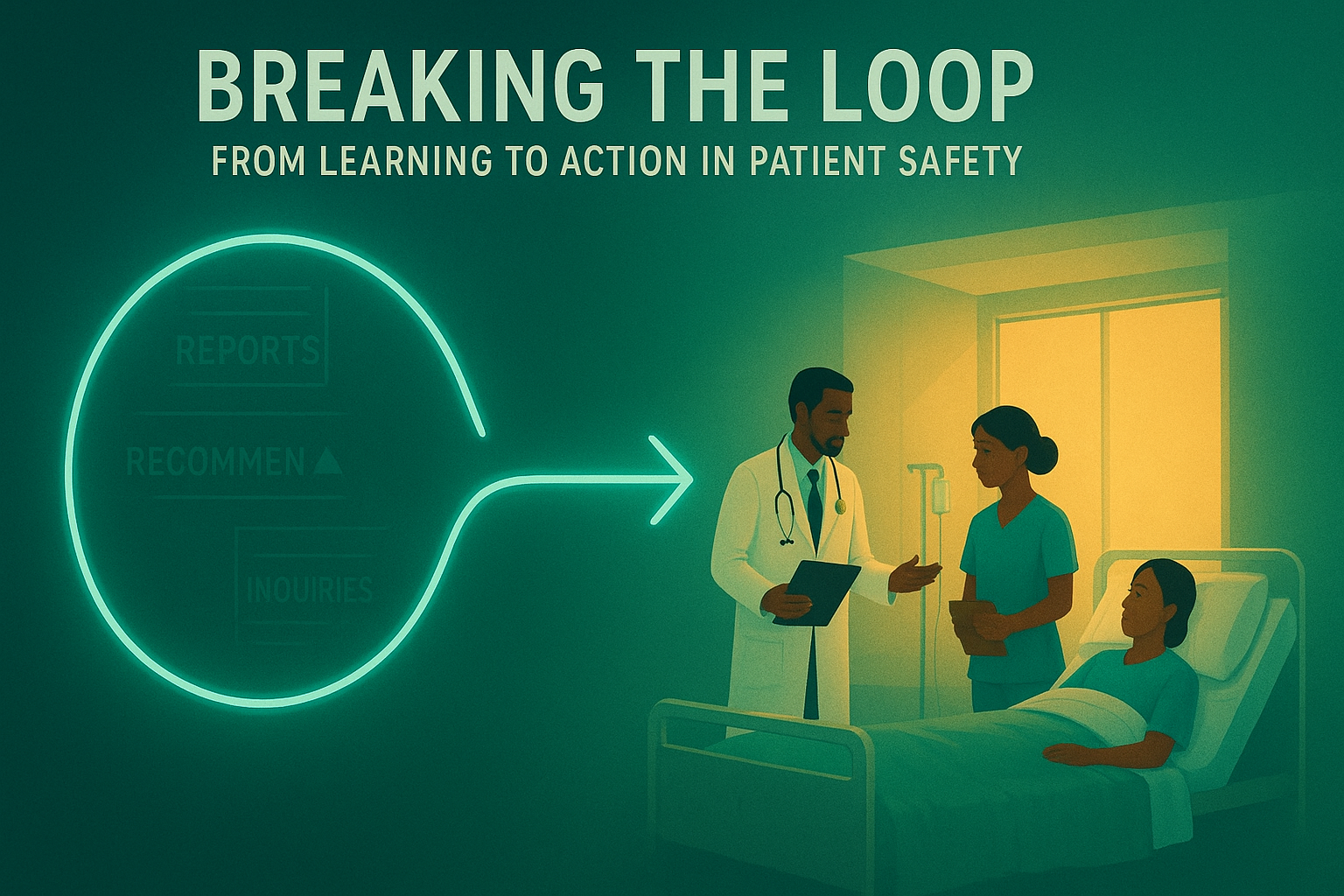
From Lessons Identified to Lessons Learned: Breaking the Loop of Rediscovery in Patient Safety
Posted on Oct 09, 2025 by Timothy Khabusi
Category: Patient Safety
In patient safety, stories like the Wayne Jowett case remain painful reminders of how well-intentioned systems can still fail. Wayne, a young man in remission from leukaemia, tragically died in 2001 after receiving vincristine intrathecally instead of intravenously—a type of error that had been recognised decades earlier. The subsequent Brian Toft inquiry catalogued over forty systemic weaknesses and called for deep reform in training, procedure design, and organisational culture.
The Problem: Knowing Is Not Doing
Despite numerous investigations and reports, similar incidents continue to occur globally. As Noble and Donaldson (2010) pointed out, the risk of intrathecal vincristine was first recognised over forty years before Wayne’s death, yet preventive actions failed to take root. The issue was not ignorance—it was implementation.
In healthcare, we often operate on the assumption that once a risk is understood and recommendations are issued, improvement will follow. Yet, as both the Toft inquiry and later reviews in maternity services show, the translation from knowing to doing is rarely automatic. We tend to re-analyse the same failures, generating new reports that echo old lessons—a phenomenon Professor Toft once described as the “loop of rediscovery.”
Why We Stay Stuck
Traditional investigation methods, such as linear Root Cause Analysis, often oversimplify complex sociotechnical interactions. These processes may produce recommendations, but they rarely foster double-loop learning—the deeper reflection that challenges underlying assumptions and system design.
Equally, fragmented governance structures, lack of accountability for implementation, and weak feedback loops between investigators, clinicians, and leadership mean that many “lessons identified” are never transformed into sustained change.
Toward a Culture of Implementation
If we are to break this cycle, we need to treat implementation as a core component of patient safety, not a postscript to investigation. Systems must:
-
Establish clear ownership of every recommendation, with time-bound follow-up.
-
Promote double-loop learning, encouraging teams to question not only what went wrong but why responses have failed before.
-
Integrate human factors and systems thinking into every level of review, so improvement efforts address real-world complexity rather than linear causality.
-
Celebrate learning from success, not just failure, to reinforce behaviours that prevent harm.
My Reflection
As an optometrist and student in Patient Safety and Clinical Human Factors, I see these dynamics mirrored in eye care too. The profession is rich in clinical skill but still maturing in systemic safety culture. True progress will depend on our ability to act decisively on what we already know—closing the gap between investigation and improvement.
Until we do, the healthcare system will continue to circle through its loops of rediscovery, diagnosing the same organisational illnesses without ever achieving a lasting cure.
References
-
Toft B. External inquiry into the adverse incident that occurred at Queen’s Medical Centre, Nottingham, 4 January 2001 (The Wayne Jowett Report). London: Department of Health; 2001. Available from: https://www.researchgate.net/publication/320035347_External_Inquiry_into_the_adverse_incident_that_occurred_at_Queen%27s_Medical_Centre_Nottingham_4th_January_2001
-
Noble DJ, Donaldson LJ. The quest to eliminate intrathecal vincristine errors: a 40-year journey. BMJ Qual Saf. 2010;19(5):323-326. doi:10.1136/qshc.2008.030874
-
Wiig S, Braithwaite J, Clay-Williams R. It's time to step it up: why safety investigations in healthcare should look more to safety science. Int J Qual Health Care. 2020;32(4):281-284. doi:10.1093/intqhc/mzaa013
-
Peerally MF, Carr S, Waring J, Dixon-Woods M. The problem with root cause analysis. BMJ Qual Saf. 2017;26(5):417-422. doi:10.1136/bmjqs-2016-005511
Tags:
Patient Safety
Timothy Khabusi
Optometrist, Innovator and Lifelong Learner. Dedicated to making eye care and science accessible and impactful.
Related Posts

External Influences on Healthcare Work: Lessons from Uganda
Read MoreLeave a Comment
Comments
No comments yet. Be the first!